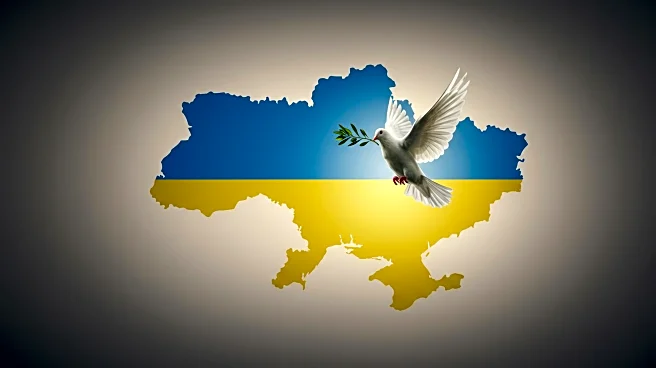What's Happening?
President Trump has called for a full peace agreement to end the war in Ukraine, diverging from the stance of U.S. allies who prioritize a ceasefire first. This announcement follows a summit with Russian President Vladimir Putin in Alaska, where Trump emphasized the need for a comprehensive peace deal. Ukrainian President Volodymyr Zelensky and European leaders have expressed the necessity of a ceasefire as a precursor to peace talks. The summit did not result in any concrete agreements, but discussions are set to continue with further meetings planned.
Why It's Important?
Trump's call for a full peace agreement represents a significant shift in U.S. foreign policy, aligning more closely with Russia's position. This move could alter the dynamics of international negotiations and impact U.S. relations with European allies and Ukraine. The potential for a comprehensive peace deal could lead to a resolution of the conflict, but it also risks alienating allies who view a ceasefire as essential. The outcome of these negotiations could have far-reaching implications for regional stability and global diplomatic relations.
What's Next?
Further discussions are planned, with President Zelensky visiting the White House for talks. The international community will be watching closely to see if a consensus can be reached. The U.S. may face diplomatic challenges in balancing its approach with the interests of European allies and Ukraine. The potential for a follow-up meeting with Putin suggests ongoing negotiations, but the path to a lasting peace remains uncertain.











